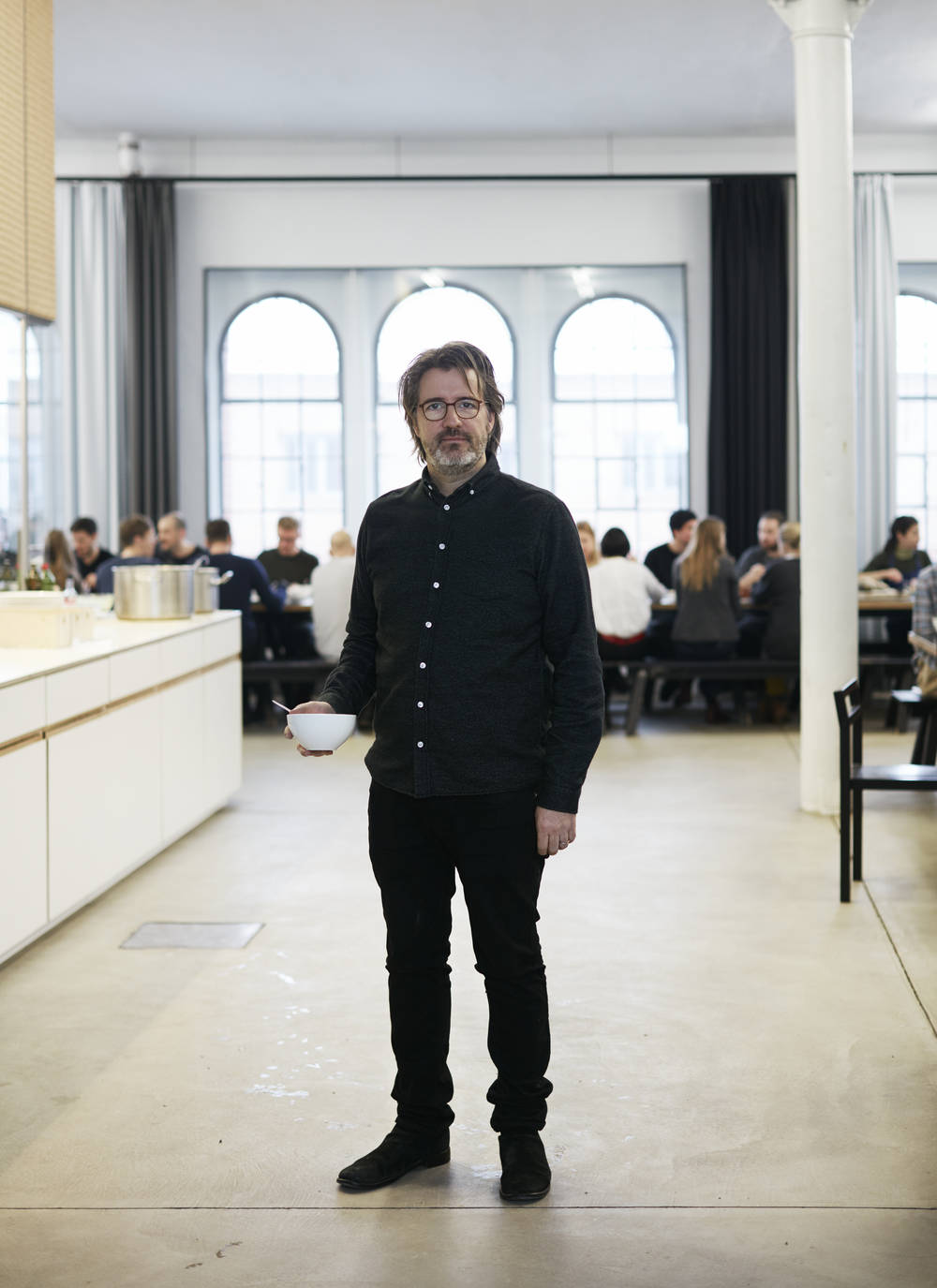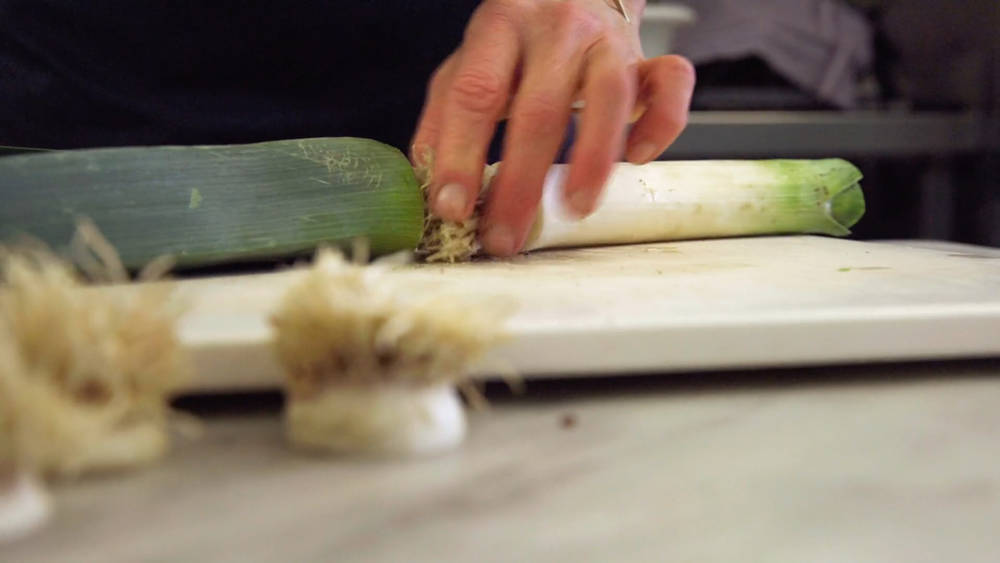Are artists particularly creative when it comes to cooking? A look into the kitchens of the art world. This time with Ólafur Elíasson and the world's most delicious sandwich.
Alice Waters, chef and co-founder of the famous Californian slow food restaurant Chez Panisse, summed up the close connection between art and cooking: “...they are both reactive and creative, imitating and adapting to each other.” So is there a connection between what happens in the studios of artists and what happens in their kitchens? Are there references to their work and personality? Are artists particularly creative when it comes to the everyday act of cooking? With the help of anecdotes and photos about their kitchens and eating habits, we provide insights into the culinary worlds of well-known artists.
Anyone who steps out onto the roof of Ólafur Elíasson’s four-story studio in Berlin Prenzlauer Berg – which boasts a total of 5,000 square meters in a former brewery building – will discover a vegetable and herb garden in which, depending on the season, beans, fennel, pumpkins or carrots grow. Where we spot simple vegetable patches, the Danish-Icelandic artist sees much more: a regenerative solar plant that produces edible energy for him and his team. Each head of salad is a small battery that stores the sun’s power until it is harvested and eaten.

The concentrated solar energy is served two floors down in the studio’s spacious canteen, the heart of which is a standalone, glass-covered kitchen. Four days a week, the team of five women prepares a vegetarian meal for the 100-odd staff members, using seasonal organic produce from the region. On the dot of one in the afternoon, the engineers, art historians, programmers, architects, artisans and artists – yes, Elíasson’s projects are that diverse and multidisciplinary – flood into the canteen from all corners of the building, sit down at the long black tables and take lunch. The boss bears the cost, as a gesture of gratitude and to give his staff a place for informal interaction. One practical side-effect: Anyone who eats the fresh, healthy food served by the studio kitchen each day will have a stronger immune system and fall ill less often.
Although the cooks work in a glass box, they are most definitely not separated from the rest of the studio. They come from the fields of dance, theater, film, and the fine arts and their work goes far beyond making certain the staff are all well-fed. They experiment with new forms of preparing food, organize workshops on topics such as fermentation or microorganisms, go on research trips (for example to “Potager du Roi”, an experimental garden at the Palace of Versailles) and work closely with other teams. For the in-house “Sustainability Research Lab”, they transformed kitchen waste such as leek leaves or onion peels into pigments by dehydrating them, then used these to make color samples for future watercolor paintings.

Ólafur Elíasson is used to being around a lot of cooking and good meals. His father was a chef on a trawler for many years, making the catch palatable for the crew who were fed up with fish by serving such dishes as “Kentucky Fried Fish” or Ceviche with lime and rhubarb juice. His uncle and his sister Victoria Eliasdóttir work as chefs, and his friends include legendary food activist Alice Waters and Danish star chef René Redzepi, have both been guests in the studio kitchen. Given such a constellation, it is almost inevitable that he never learned to cook properly, Elíasson quips. He finds chopping vegetables requires too much time, and the process of preparing the food, he feels, is not relaxing and more a stress factor. Conveniently, one of his favorite dishes is home-made crispbread with veggie paste and salt.
A lack of patience in the kitchen does not, however, prevent Elíasson from thinking deeply about what lands on his plate. His decision that the studio will only cook vegetarian dishes that are carbon-neutral as far as possible is the logical consequence of his work as a climate activist, one of the central themes of his work as an artist and social entrepreneur. In this context, Elíasson does not aim his message directly at our powers of reason but at all our faculties: He is convinced that one needs to see, hear, smell, and feel things in order to truly be moved by them and prompted to think about them. He therefore designs monumental installations that offer the viewer intense physical experiences. For example, in 2014 he had 12 gigantic blocks of ice transported from Greenland to Copenhagen in order to render the melting of the polar ice directly tangible. Probably his best-known work is “The Weather Project”, for which he hung a huge artificial sun in the turbine hall of the Tate Modern in 2003, attracting more than 12 million visitors.

Ólafur ElÍasson (top of table) eating with staff at The Kitchen in his Berlin studio. Photograph: Thorsten Futh/The Guardian, Image via www.theguardian.com

Ólafur Elíasson's Studio kitchen, Image via olafureliasson.net
For Elíasson, eating is a holistic experience, during which interaction with other people and the surroundings in which you eat have a strong influence on the taste experience. If he is alone, he often feels no hunger and simply forgets to eat, as he once commented in an interview. As a child, he spent his summer holidays with his father and his half-sister in Iceland, often going on trips into nature with them. For Elíasson, the picnic they took along of egg salad and wholegrain bread with butter and wild thyme tasted better in the midst of breathtaking countryside than could any menu dished up by a starred chef.
The kitchen team in Studio Ólafur Elíasson sets out to cook memorable meals using simply ingredients. Winter, in particular, when for weeks the vegetable boxes only produce root vegetables, can be a challenge. However, even then, when out of protest at four days solid of beetroot salad some of the staff started going to the pizzeria opposite the studio for lunch, Elíasson remained happy with the beets. The main thing for him is being in good company.
WHAT DO THE KITCHENS OF THE ART WORLD LOOK LIKE?
From Frida Kahlo to Haerizadeh, Haerizadeh & Rahmanian









